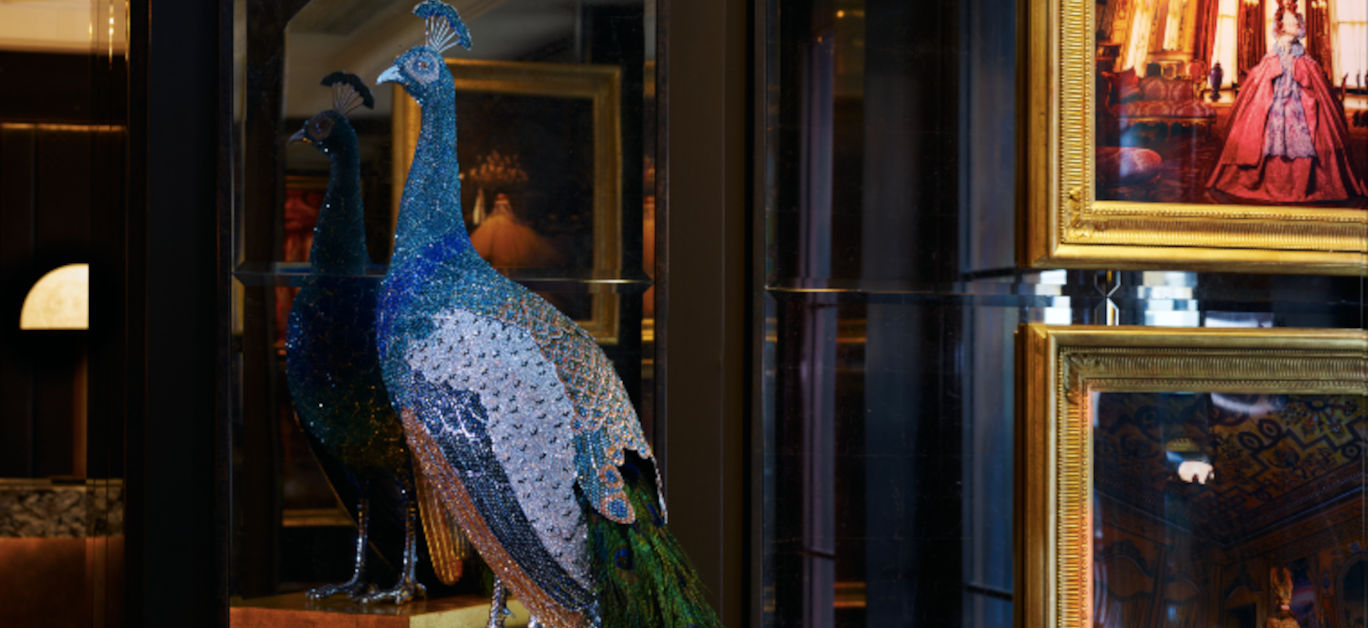Leading British hospitality and interior design studio, Goddard Littlefair were selected by London and Regional, owners of Iconic Luxury Hotels to design its fifth luxury hotel under the brand, The Mayfair Townhouse. Opening this December and located in the heart of Mayfair on Half Moon Street, near London’s Green Park, the boutique hotel has seven Georgian listed buildings within its structure of 15 townhouses and will welcome guests seeking a discreet London address.
Goddard Littlefair set out to restore the interiors of the townhouses, knitting them together to recreate the Georgian spirit. The Mayfair Townhouse lies in the old part of Georgian Mayfair, focusing on its rich history and the tales it could tell, the design studio were tasked to give the hotel’s rooms and public spaces a feeling that they have a Georgian heart with a contemporary rhythm.
Notable was the fact that the townhouses lining Half Moon Street were once home to Oscar Wilde and a setting for his most famous play, The Importance of Being Earnest. Wilde and his contemporaries spearheaded the Aesthetic Movement in England which saw beauty and design celebrated in a reaction against the dominant, industrial revolution of recent times.
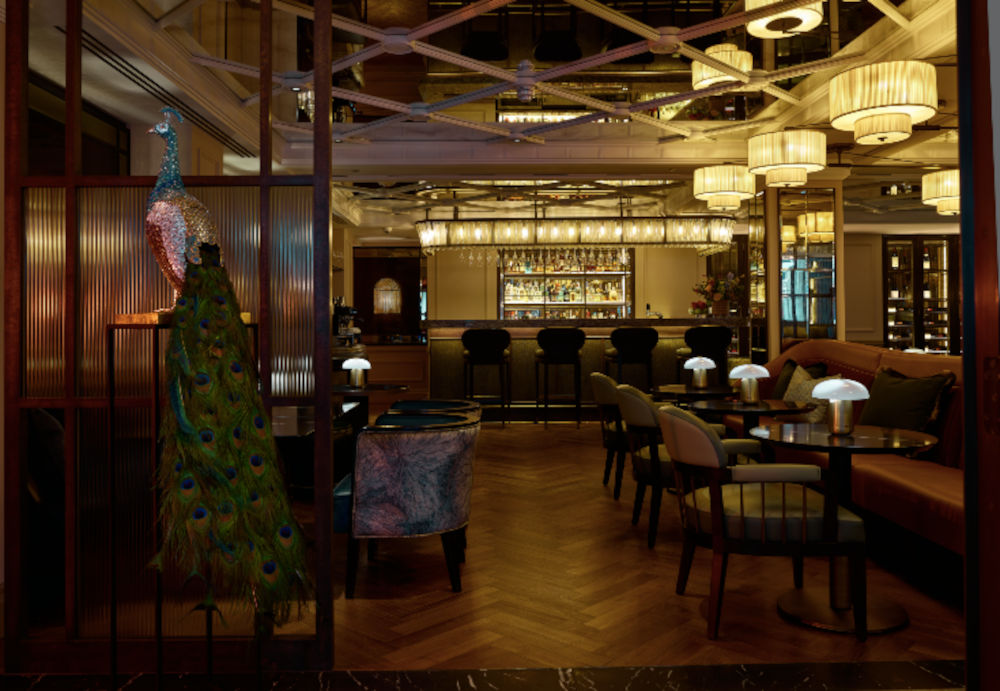
Jo Littlefair, co-founder and director of Goddard Littlefair, said: “They also led a rich and indulgent lifestyle, being provocative in order to court controversy. The design we pursued for the townhouse marries Old and New Mayfair, with a layer of 1920’s extravagance.” From every corner of the hotel, the design is unique and full of personality, always referencing the bygone era inhabited by the dandy.
Capturing this playful spirit, Goddard Littlefair delved into the personalities of the original inhabitants of the area and took inspiration from characters like Wilde and his contemporary aesthetes. The flamboyant dressing, pursuit of beauty and eccentric quality of the time is successfully interwoven in the design and has transpired through the fabrics, colours, intricate detailing and subtle layers throughout the hotel. Hints of extrovert personalities that lie beneath the building have been captured by Goddard Littlefair’s choice of colour palette and flashes of details, subtly capturing the adventurous mischief of the dandy.

Stepping under a fanned metal canopy bearing the hotel’s name into an entrance lobby lined with dimpled glass and metal screens, a crescent in green and white marble decorates the floor here. To the right is the intimate reception offering the discretion and welcome one would expect of a residential London townhouse. Alabaster lamps glow on the reception while cut crystal lanterns cast shadows across the ceilings.
The hotel has an alluring story to tell through its artwork, a story which enriches understanding of the buildings and the lives that played out inside their walls. Goddard Littlefair worked closely with art consultant, Minda Dowling, who embraced the spirit of the hotel in its entirety. The experience starts as soon as you enter the reception. Guests will immediately be struck by the unexpected and, if they are inquisitive to discover more, they will find a developed narrative that puts personality at the centre of this hotel.
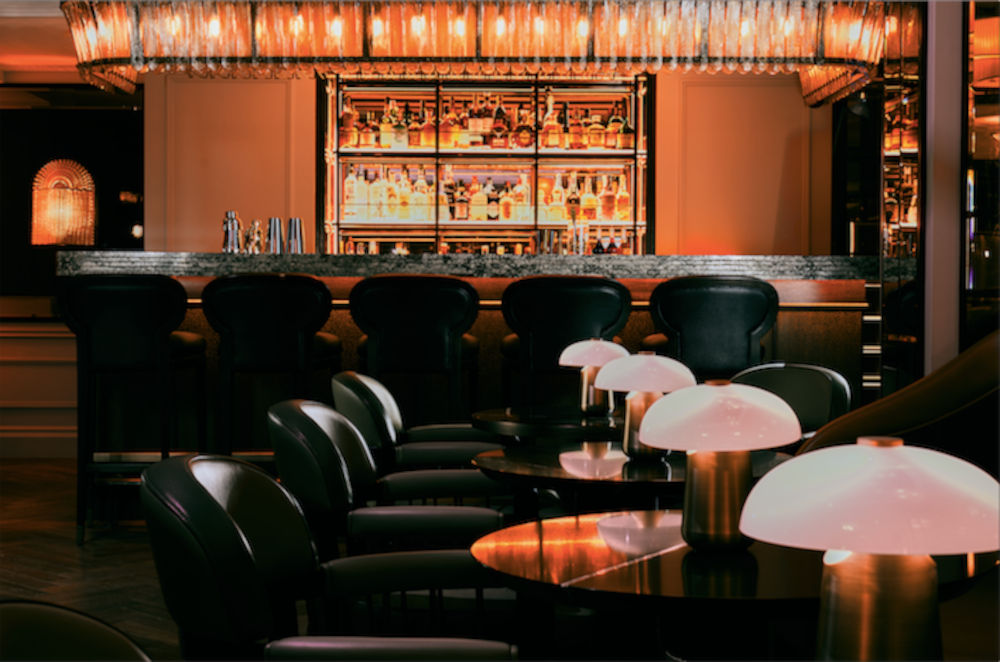
The aptly named Dandy Bar is adjacent to the reception and located in the heart of the hotel on the ground floor. The design lures in guests to a twinkling, dimly-lit space to seek shelter from the busy Mayfair streets. The furniture here, as in the rest of the hotel, is bespoke to the project, each detail has been curated by the Goddard Littlefair team to exacting standards.
Seating in the bar is covered in printed velvets and leathers with marble, brass and high gloss timbers as base finishes. Lampshades have silk pleated shades and while there are some significant lighting pieces, the glass and brass gantry above the bar and chandelier of alabaster and bronze running down the staircase to The Lower Ground are simply breath-taking. “We looked at the flamboyance of feathers in flapper outfits and the traditional gentleman’s pocket watch to inspire the design of both of these pieces,” said senior designer Gemma Prentice.
Down the stairs to The Lower Ground, and the Club Room acts like a library space, an area to explore and connect to the personalities of the time. This is executed through collectibles, accessories and books linked to the characters and personalities that are entwined through the design of The Mayfair Townhouse. Wall lights adorn mirrored panels and a glamorous tasselled chandelier sits on a central ceiling rose.
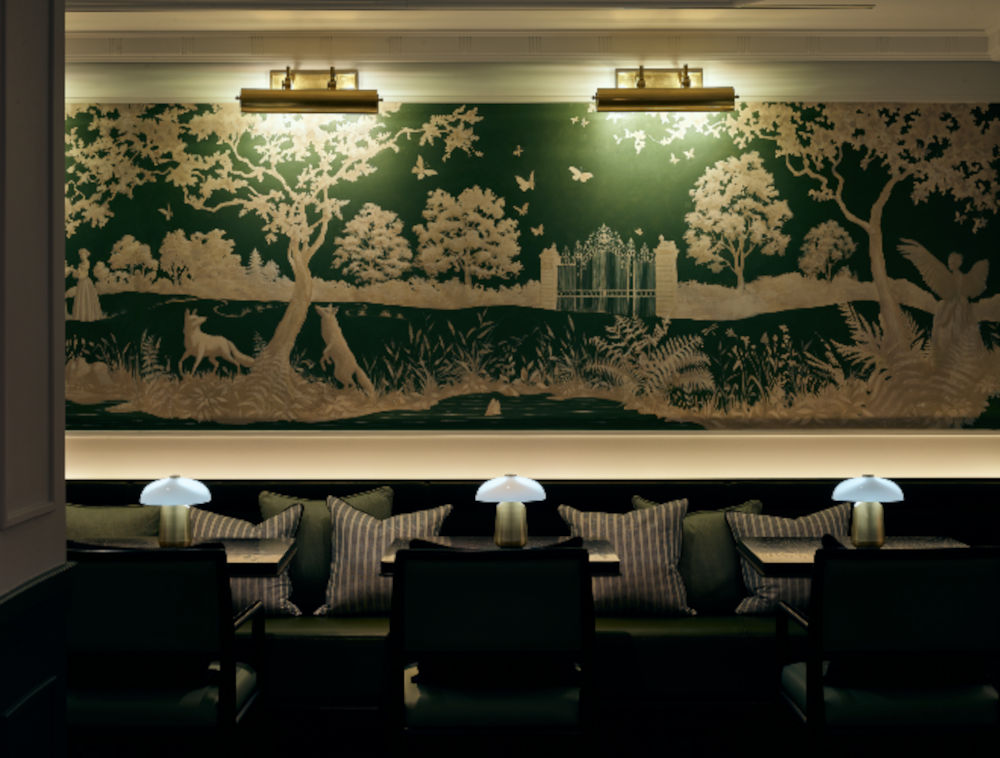
A snug room, nick-named The Den is panelled and painted red, lined with fitted seating and layers of artworks hung on the walls, all with one thing in common – a fox. As Littlefair explains: “The fox was chosen as a symbol to represent the hotel as it is a creature woven into British folklore, a resident of both city and country and a character occupying the pages of countless poems, tales and fables throughout the annals of history. The fox is also symbolic of the subversive and mischievous characteristics of the aesthete’s whose influences we were channelling. Playfulness counterbalanced with wisdom are themes that run throughout the hotel’s design.”
A further room, Oscar’s Study, instils a feeling it could possibly belong to the residence’s owner and makes up the final element of The Lower Ground. A simple gym carries the sophisticated design language alongside highly decorative restrooms.
Returning to the ground floor, the lobby lift has a ceiling embellished with a three-dimensional laser cut metal sculpture and two lifts whisk guests to floors above. Due to the nature of the property, with its varying ceiling heights and levels and characterful corridors, each room is unique and has not been designed simply with a decadent or opulent aesthetic in mind, but to enhance the real personality that the framework of the building offered up.
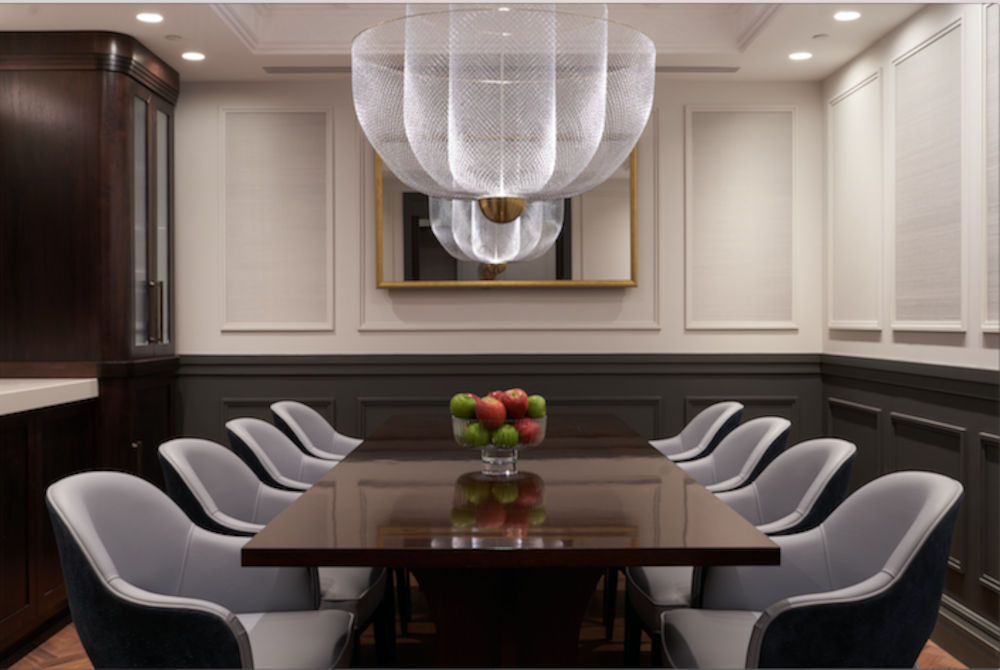
“There are almost no identical rooms in the entire building,” said Martin Goddard, co-founder and director of Goddard Littlefair. “Added to that, previous incarnations of hotels had wiped away period details leaving us with few historic references for the interiors. We had to set up a design language that could relate to the architecture and be interpreted into each room through panelling, colouration and distinctive detailing. The result is a unity through the bedrooms, but guests who stay multiple times will have a different experience on each occasion.”
Working with the skeleton of the building, Goddard Littlefair sought opportunities to create special experiences within the property. For example, the garden suites gave the design studio the opportunity to create an indoor/outdoor scheme. Littlefair explained: “The position of these suites on the ground floor of the property meant we could incorporate some of the exterior of the building into the rooms. Inspired by Cecil Beaton’s love of gardens, we created a crittal framed conservatory with doors opening to a small, walled courtyard allowing the guest their own English garden in the heart of London.”
The ceiling in the living area-come-conservatory is strewn with lanterns and the room displays rattan upholstery, patterned walls and antiqued mirrors. The terrace has been accessorised with wall-hung mirrors and overlaid with greenery. Cecil Beaton was an influential creative and thinker with connections to celebrity and royalty alike. Goddard Littlefair imagined a space where Cecil would feel at home.

Two additional suites on the fifth floor of the hotel had working titles of the ‘penthouse suites’ during the design process. The intention here was to create two spacious rooms that alluded to a fictional but contemporary Dandy muse. “’What decadence would this person embrace and how would they wish to live in the twenty-first century Mayfair?’ were questions we posed to ourselves during the evolution of these designs.” says Goddard. The results identify with the best of Mayfair-inspired luxury design.
A simple, muted corridor design with painted mouldings link all of the sleeping accommodation, while intriguing artwork will captivate and surprise guests on their journey to their rooms. The doors feature the hotel’s icon of the fox in the form of a detailed, metal hook.
All imagery used in this article credit: Goddard Littlefair












